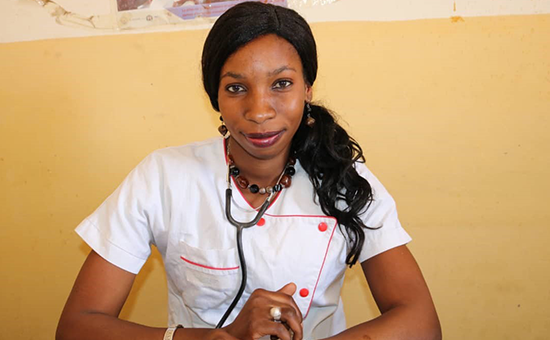
12 Nov First Person: How a Hospital Matron Teamed Up with a Women’s Group to Improve Prenatal Care
I am Fatoumata Bado, matron at the Kamoune Diambre Rural Maternity Hospital in Mali’s Diéma health district. I have been working here for three years. During my first two years, the hospital’s prenatal care and delivery services were markedly underutilized, with women frequently attending their first prenatal consultant in their third trimester of pregnancy. In addition, most of these women gave birth at home. As a result, the rate of postpartum anemia and hemorrhage was high. At one point, I wanted to leave this job for one in a different facility, because I did not feel needed here.
In February 2019, we were serving a population of 2,365 residents, including 520 women ages 15-49, and 118 pregnant women. That month, the members of the Kamoune Diambre women’s group, who had been oriented by the Human Resources for Health in 2030 (HRH2030) Program in the community health approach, began sensitizing local households on the importance of health care and the availability of maternity. Each month, I participated in their regular meeting, where we discussed women’s health issues and highlighted key challenges—including the low rates of prenatal consultations at the center—and explaining the high rates of maternal and child mortality linked to these behaviors.
Convinced of the risks, the women’s group members, with the support of the community’s traditional birth attendant, began to accompany pregnant women to the health center for prenatal care and delivery services. As a result, the rates of women using the hospital’s services soared. From March to September 2019, the rates of prenatal consultations in the first trimester of pregnancy jumped from 31% to 81%, rates for the fourth prenatal visit (CPN4) from 11% to 51%, and the percentage of women delivering at the center grew from 40% to 69%.
I am very proud of these results, especially the rate of CPN4, which remains a challenge in Mali as a whole. I thank the HRH2030 project for this great community approach initiative, which is a sustainable solution to the health problems within our communities.
Since February 2019, the HRH2030 project has supported 1,010 women’s groups to improve the health of mothers and children in the community.





